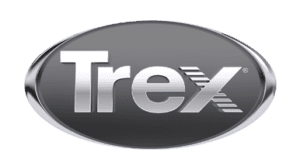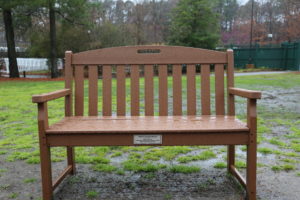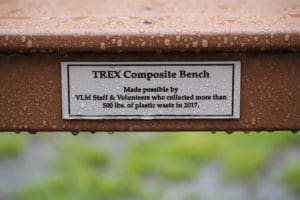Conservation
The Virginia Living Museum is a certified Virginia Green attraction committed to minimizing its environmental impacts by preventing pollution wherever feasible in its operations. In addition to its operating practices, the Museum promotes conservation to its visitors through the Goodson Living Green House, solar displays, Conservation Garden and use of native plants throughout its exhibits and grounds.
Watch this video that demonstrates what the Virginia Living Museum is doing to live green.
Animal Conservation Programs
The Museum exhibits 10 animals that are on either federal or state endangered or threatened lists. The Museum participates in breeding programs for Seahorses and Red Wolves to sustain and/or restore populations. It assists in the study of Monarch Butterflies and conducts surveys of basking turtles. Museum staff and volunteers also participate in several field conservation programs.
Read about conservation programs with exhibit animals.
Read about field conservation programs.
Read about monarch butterflies.
Seafood Watch
Help keep the oceans healthy by choosing seafood that’s plentiful and caught or farmed in ways that protect the oceans. Learn about the Seafood Watch program created by the Monterey Bay Aquarium and download the latest Seafood Watch Guide.
Project FeederWatch


The VLM partnered with Project FeederWatch in fall 2016 to track populations of winter birds on museum grounds. During the 2017-2018 season VLM volunteers and staff observed 29 species of birds. This data gets sent to the Cornell Lab of Ornithology where they compile counts from all FeederWatch sites. FeederWatch data helps scientists track broad scale movements of winter bird populations and long-term trends in bird distribution and abundance.
Information PacketVirginia Green Operating Practices
The Virginia Living Museum has been a certified Virginia Green Attraction since June 2008, committed to minimizing its environmental impacts by preventing pollution wherever feasible in its operations. The VLM has instituted a number of pollution prevention activities, such as recycling programs, purchasing recycled-content containers for their food services, water efficiency practices, energy conservation, and renewable energy projects. Read more…
Dark Sky
Have you ever been outside at night on a ship? Or maybe in the mountains? Or even in a rural area, far away from a major city? Looking up at such a sky makes you feel like you can reach up and touch the stars. “Why doesn’t the sky look like this where I live?” you might wonder. Read more…
TREX
In the spring of 2017, the Virginia Living Museum began participating in the TREX Community Recycling Program.
Staff and volunteers bring in their #1 and #4 plastic bags and film which gets counted, bagged and dropped off at a bulk plastic collection site. TREX uses this raw material to build their composite wood lumber. For every 500 pounds we collect in a 6 month period TREX rewards our museum with a composite wood bench which we display out on museum grounds. This program has allowed our facility to cut back significantly on plastic waste. Currently we have collected over 1,200 pounds of plastic!
Invasive Species
Invasive species can cause harm to the environment, economy, and human health. Learn more about species found in Virginia and how you can help.








